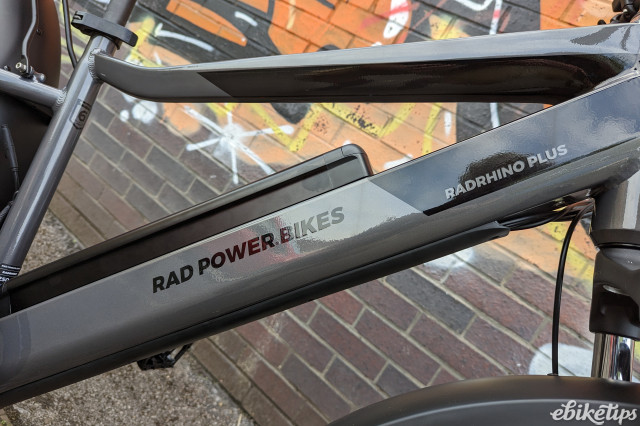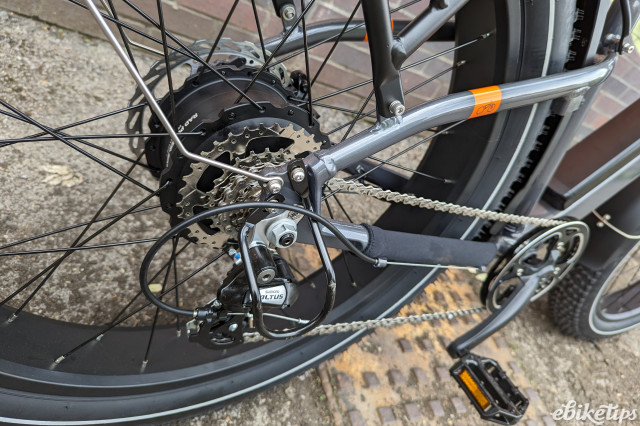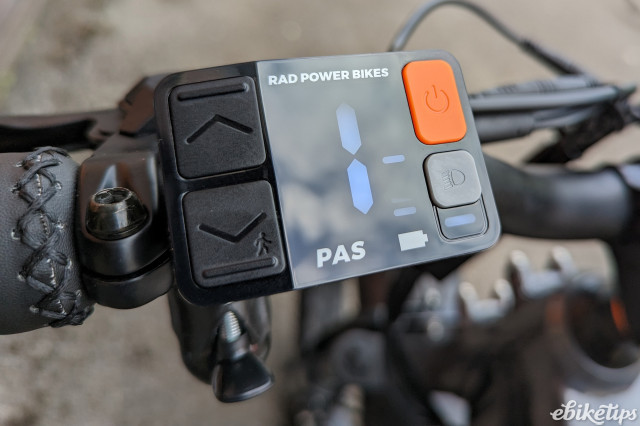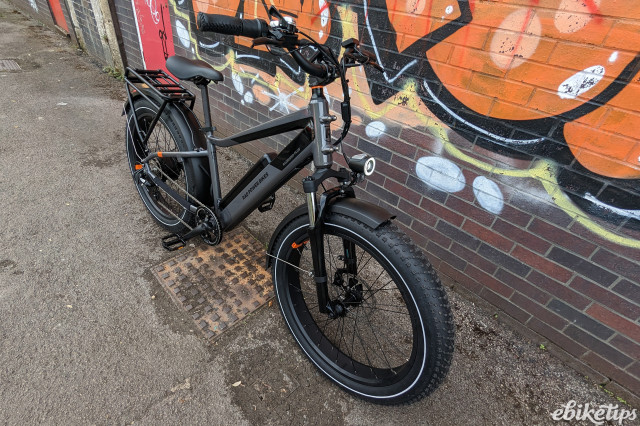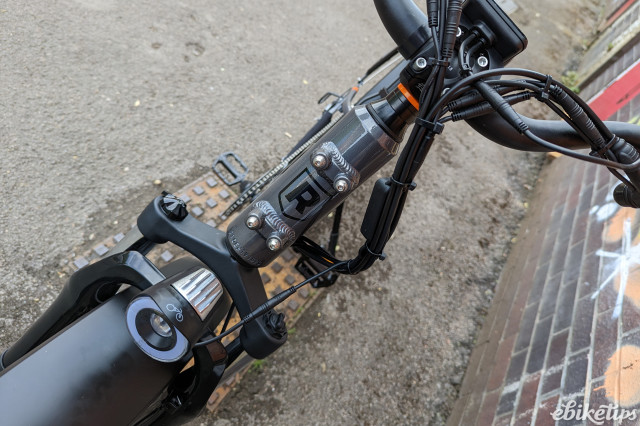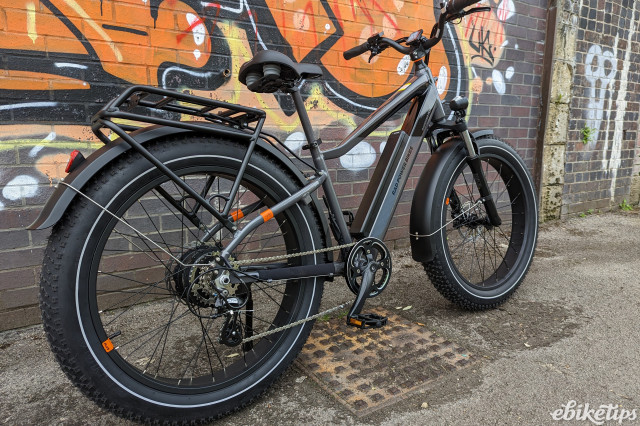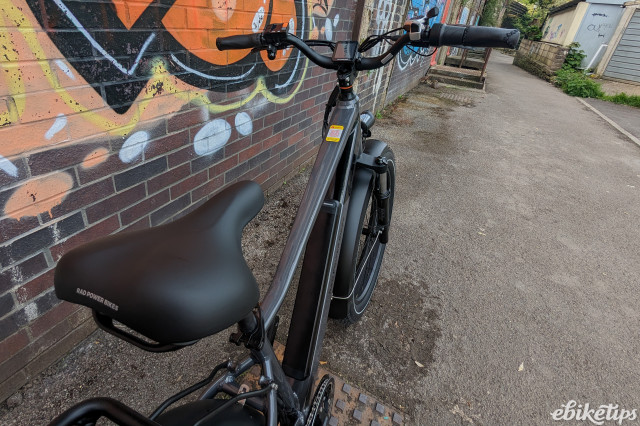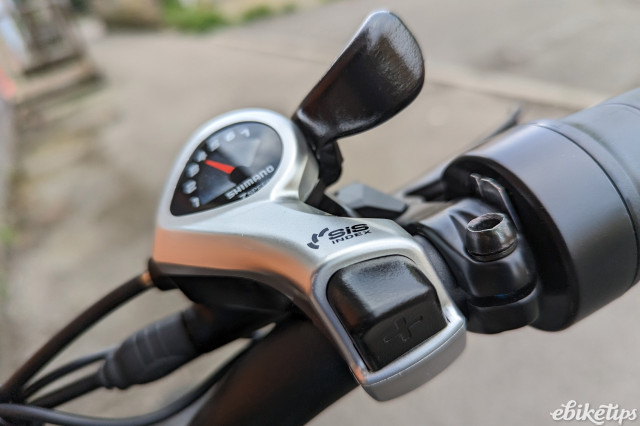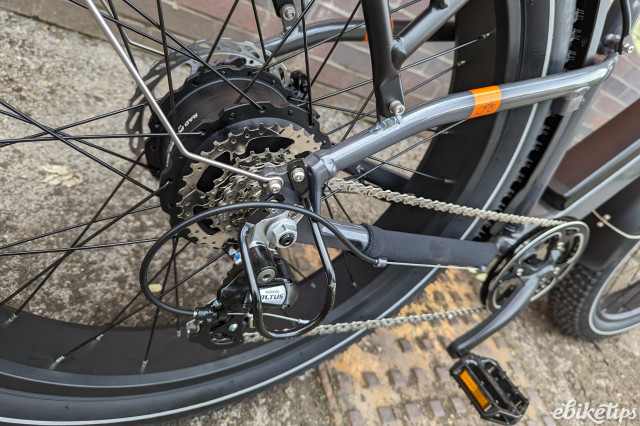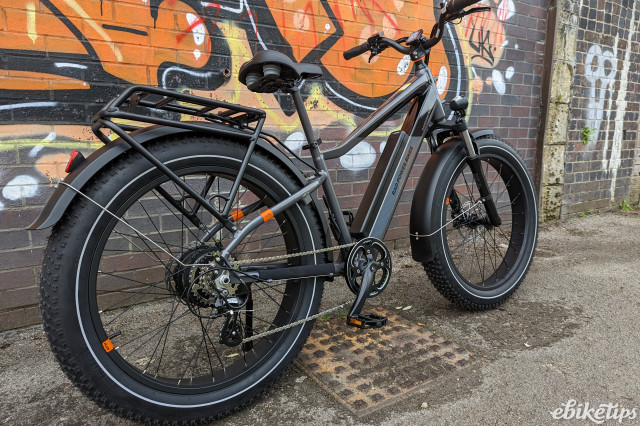Rad Power Bikes RadRhino 6 Plus
Overview
- Lots of fun
- Enough power
- Solid and confident
- Large
- Heavy
- Unwieldy
Rad Power Bikes’ RadRhino 6 Plus is so named not, alas, because it has a massive horn at the front (though we’re sure something could be arranged – there's a mounting point in just the right place for fixing a basket on the front), but because it’s heavy, grey, and might not come off too badly in a collision with a Land Rover. We haven’t actually tested that last one, but there's a definite vibe of solidity given off by the RadRhino nonetheless.
Many e-bikes we review can be easily picked up in one hand, all the better for mounting on a car carrier or lifting up the creaking stairs to an artist’s dismal garret, but not the RadRhino. It’s so heavy we’re not sure it would be remotely rideable without the power assist – at least not in any enjoyable fashion.
Luckily, it does have the power assist – a 250W motor in the rear wheel hub – and this means the big bike is a lot of fun to ride.
It’s impossible to look at the Rhino without paying at least some attention to those four-inch tyres. They’re certainly a stand-out feature, especially with the reflective ring that shines at night. Fat tyres like this usually mean a bike is aimed at those for whom riding in snow, on loose surfaces, or through lots of mud is a good time. While the treads on these thicc boys might not be deep enough for too much of that kind of thing, between them and the motor, off-road joyriding isn’t out of the question.
What the RadRhino does extremely well, thanks to the tyres, the motor, the suspension and its overall solidity, is exude an air of confidence that passes over to the rider like a communicable disease. Once infected, it’s entirely possible to go whooping down a hill you might previously have approached with trepidation on a regular commuter hybrid, feeling secure that the 18cm hydraulic disc brakes will stop you long before you reach the end.
Uphill stretches aren’t as enjoyable, obviously, because nobody likes to actually pedal, but are less of a problem thanks to that motor and the gearing. It leaves a large gap between the top and penultimate cogs, meaning a jump in resistance which is ideal for when a larger slope suddenly looms.
If all of that sounds like hyperbole, it probably is. But the Rhino really is an awful lot of fun for the same sort of money you’d splash on something like the Tenways CGO600 or Crussis e-Cross 1.6. In terms of performance, you’d have to splash a fair bit more cash to get a mid-mounted motor. Even the Riverside 540e costs £2,399 these days.
There are however some drawbacks to the size and weight. Storage will be a problem if you don’t have access to a garage or other secure outbuilding. You’re not going to want to carry it upstairs under any circumstances (though this might be a good substitute for going to the gym) and nor will it play well with some cycle carriers – having it crash onto the tarmac would be a heartbreaking experience, so be sure your carrier can manage 35kg. It’s longer than some bikes – particularly noticeable when placed next to something short like the Honbike Uni4 – and the handlebars are broad.
Maintenance may also become an issue, as while all the moving parts are easily accessible, there are no quick-release catches anywhere apart from the saddle post, and the large tyres and tubes are going to be a pain to change in the wild after a puncture. Luckily, the wheels come with puncture resistant liners as standard.
It’s certainly not a bike that feels cramped, however, and all the important parts are easy to get to. There are two displays in front of the rider, one on the left for power management and another in the centre for speed and distance. On the left there's a built-in bell, on the right a gear shifter and a twist-grip that in this UK spec bike only accelerates it to a maximum of 6mph for comfortable pushing purposes – something we appreciated more with this bike than many others.
There's the usual speed limit, meaning the assistance cuts out if you’re screaming down a hill, and lockable front suspension if the tyres aren’t giving you a comfortable enough ride. The saddle is broad and comfy and is equipped with a bar underneath you can get a good grip on if you’re lifting it. The battery can be easily hoisted out of the frame, and has a 10-LED charge indicator for a more granular idea of how much juice is left. There are integrated lights too, with the rear unit doubling up as a brake light.
Overall, this is a bike you can happily spend a lot of time with. It’s not going to start causing you pain in unspeakable places, nor does it feel like it’s going to let you down. Endurance is a function of the way the bike is used, but the stated battery life of up to 40 miles on a charge doesn’t feel too far off.
So while this isn’t a bike for the inner-city commuter or the occasional rider, it’s perfect for anyone who wants to get out and enjoy themselves on long country rides or seaside paths, and who doesn’t want to worry about branching off the tarmac once in a while. It’s comfortable to ride, and despite being heavy isn’t too bad in the corners, though we might never call it nimble. It’s also a bike for the taller rider – the company recommends at least a 30in inside leg measurement, though a step-thru frame is also available. A bit of bodyweight will come in handy for controlling the bike too, especially if you make use of the rear rack and front basket mounting point to add even more weight and upset the balance.
It’s also, at £1,750 before special offers, pretty good value, and one you should think carefully about if you can house it in the style it demands.
1 comments
The gears look pretty basic, though obviously less needed in a bike like this. Whats the spec of them?

